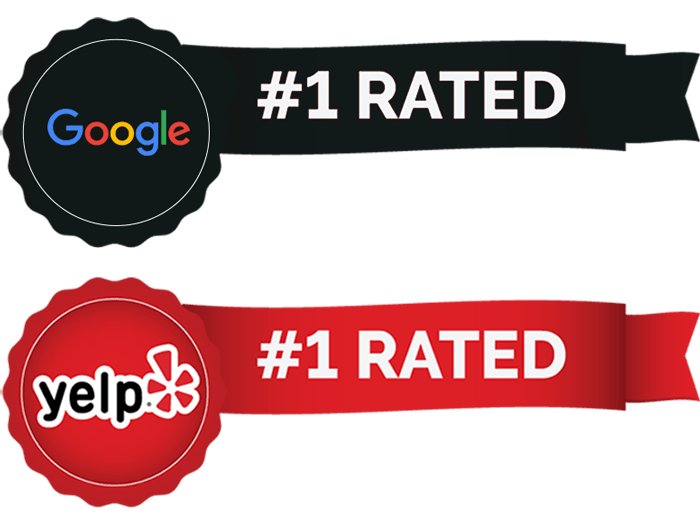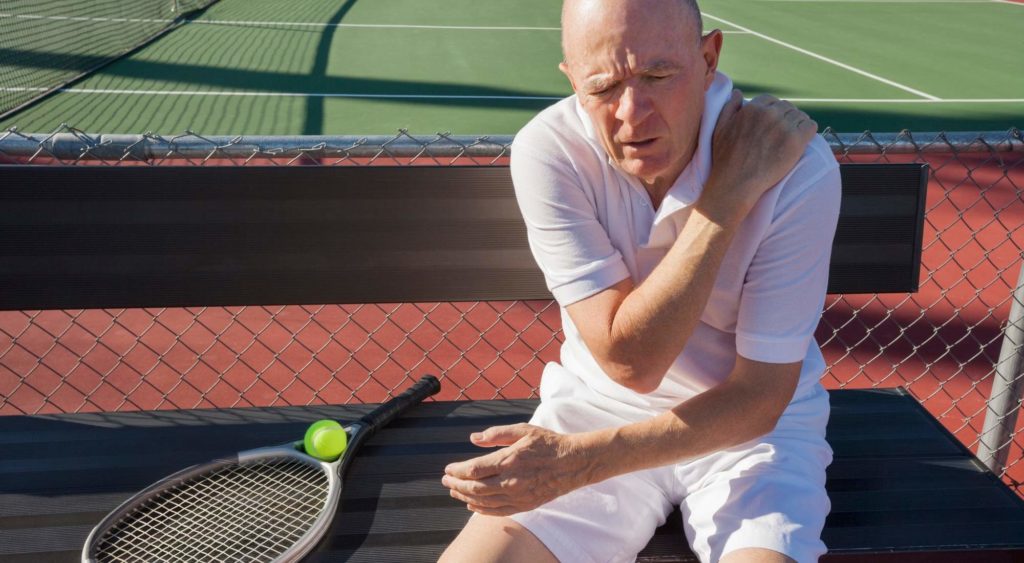Rotator Cuff Physical Therapy

Physical Therapy for Rotator Cuff – Information, Exercises, and More
After suffering from a throbbing shoulder, struggling to get through your weekly tennis match, and having more sleepless nights than you’d care to remember — you finally have a diagnosis for your pain.
Your discomfort is caused by a rotator cuff injury.
It sounds serious, and your doctor said surgery isn’t off the table, but she’d like you to try physical therapy first.
You may have thought that physical therapy was only for serious athletes or people recovering from major surgery, but that’s not the case.
Physical therapy can help everyone, including those with rotator cuff pain.
This article takes you through specific rotator cuff injuries and exactly what kind of exercises you can expect during physical therapy for rotator cuff strain.

Table of Contents
What Is the Rotator Cuff?
So, what exactly is your rotator cuff?
This refers to a group of four muscles and tendons that stabilize your shoulder joint and allow you to lift and rotate your arms. The rotator cuff keeps the top of the humerus bone in the shoulder socket where it belongs.
Rotator cuff injuries are fairly common, and the likelihood that you’ll experience one increases with age. If you have this type of injury, you’ll feel pain in your shoulder.
What Causes Rotator Cuff Pain?
There are two main causes of rotator cuff pain:
- Traumatic shoulder injury – This type of injury is most often caused by falling directly on the shoulder or taking a direct blow to the area.
- Degeneration/overuse/repetitive actions – Most rotator cuff tears are a result of wear and tear in the shoulder joint over time.
Common Rotator Cuff Injuries
Rotator cuff injuries are quite common. Each year, about 2 million people in the U.S. visit their doctors because of a rotator cuff issue.
Common injuries include:
- Rotator cuff strain
- Rotator cuff tear
- Tendinitis (inflamed tendons in the shoulder)
- Bursitis (inflammations of the bursae – small, fluid-filled sacs cushioning the muscles and tendons near your shoulder joint)
Rotator Cuff Injury Symptoms
Symptoms of a rotator cuff injury can include:
- A dull ache deep in the shoulder
- Pain that disturbs sleep, especially when lying on the injured shoulder
- Difficulty raising arms or decreased range of motion
- Arm weakness
- Problems performing everyday activities such as combing your hair or fastening your bra
If you’re experiencing shoulder pain, don’t try and self-diagnose or wait it out to see if the pain goes away on its own. If you have a rotator cuff injury and continue to use it despite the pain, you will likely cause further damage. Seeking treatment with a medical professional is the best course of action.
Rotator Cuff Injury Treatment
Treatment for rotator cuff injuries depends on the severity of the injury.
Some shoulder and rotator cuff pain goes away with self-treatment, including:
- Rest
- Ice
- Over-the-counter pain relievers
If rest isn’t cutting it, you have a severe rotator cuff injury, or if you have a job that requires lifting heavy objects or raising your arms overhead, your doctor may advise you to move on to more aggressive treatments.
These treatment options may include:
- Physical therapy
- Injections; or
- Surgery
Always be sure to consult a doctor to help determine your course of treatment. Even if your injury is less severe, it’s good to have a medical professional help document and monitor the state of your rotator cuff.
Physical Therapy
If rest and over-the-counter medications aren’t providing pain relief, physical therapy is often your best bet.
Even if you have a torn rotator cuff, physical therapy may help you avoid surgery.
A certified physical therapist will help you:
- Pinpoint the location of the rotator cuff injury.
- Relieve pain through targeted stretches and exercises.
- Increase shoulder flexibility and strength.
- Restore range of motion to the shoulder and arm.
Physical therapy is often the key to long-term success after a rotator cuff injury.
Injections
If pain is interfering with your daily activities, sleep, or physical therapy, your doctor might recommend a steroid injection into your shoulder joint.
While these shots can relieve pain temporarily, they aren’t a long-term solution.
You should be aware that continued injections can weaken the tendon and may lower the success of surgery if it is needed.
Surgery
Surgery may be recommended if:
- Your pain and other symptoms have lasted 6-12 months.
- You have a large rotator cuff tear (more than 3 cm).
- You have significant weakness and loss of arm and shoulder movement.
- You use your arms overhead frequently for work or sports.
- Your rotator cuff tear was caused by an acute injury (fall, direct blow to the shoulder, etc.).
A rotator cuff surgery involves reattaching your tendon to the head of the humerus (upper arm bone). However, other shoulder problems can be addressed and fixed by your surgeon simultaneously.
These can include:
- Biceps tendon tears
- Osteoarthritis
- Bone spurs
- Soft tissue tears
If you do end up needing surgery to repair your rotator cuff injury, adding physical therapy to your wellness routine afterward will help with healing and your return to normal movement.
Rotator Cuff Physical Therapy — Will PT Help?
Are you thinking of trying physical therapy? Rotator cuff injuries usually respond very well to this type of treatment.
Not only will physical therapy help, but it is also the most recommended treatment for rotator cuff injuries.
Many people with rotator cuff pain and injuries can find relief, manage their symptoms, and prevent future pain when they return to activities after physical therapy.
Highly trained physical therapists can create an exercise routine that helps to improve your range of motion, flexibility, and strength of the muscles surrounding the shoulder joint.
Rotator Cuff Physical Therapy After Surgery
Physical therapy is an essential recovery component following rotator cuff surgery.
The first few weeks post-op, your shoulder is at the greatest risk of reinjury. During this time, you will wear a sling to limit shoulder motion and may need assistance performing everyday tasks like bathing or getting dressed.
In this first phase following surgery, your physical therapist will:
- Teach you range-of-motion and isometric strengthening exercises to perform on your own at home while you recover.
- Provide manual therapy (hands-on treatment) such as light massage and targeted stretches.
- Advise you on pain management options.
- Monitor your progress and update your treatment plan as needed.
When it is safe to do so, your physical therapist will add additional range-of-motion and strengthening exercises to your program designed to get you back in action and comfortably doing your normal, everyday activities.
In Motion O.C.’s physical therapists have lots of experience treating post-surgical rotator cuff injuries, so you can feel safe in their hands.
The Best Shoulder Rotator Cuff Physical Therapy Exercises
While much of your recovery will happen with your physical therapist, to achieve the best possible results, you’ll need to keep up the work on your own.
Here are a few examples of rotator cuff physical therapy exercises you can do at home.
If you’re unfamiliar with these exercises, don’t worry! Your physical therapist will go through each stretch and exercise with you step-by-step.
Crossover Arm Stretch
The crossover arm stretch will help work the muscles at the back of your shoulders.
To complete this exercise:
- While relaxing your shoulders, gently pull one arm (holding at the upper arm) as far as you can across your chest.
- Hold for 30 seconds
- Relax for 30 seconds.
- Repeat with the other arm.
Do four repetitions of the crossover arm stretch on each side. Make sure not to put pressure on/pull your elbow while doing this exercise.
Side-Lying External Rotation
The side-lying external rotation strengthens the rotator cuff muscles.
To complete this exercise:
- Lie on your side with a pillow or your arm under your head.
- Place your top arm by your side and bend upward at a 90-degree angle.
- Without moving your elbow, slowly twist your arm and raise your hand toward the sky.
- Complete five to eight reps.
- Repeat on the other side.
Do three sets of the side-lying external rotation on each side. As your shoulder gets stronger, you can add weights.
Pendulum
The pendulum works muscles in the chest, back, and shoulders.
To complete this exercise:
- Lean forward and place one hand on a table for support while letting the other arm hang at your side.
- Gently swing your arm back and forth.
- Gently swing your arm from side to side.
- Gently swing your arm in a circular motion.
- Repeat with the other arm.
Do two sets of ten pendulum exercises. Don’t round your back or lock your knees while performing these.
Standing Rows
Standing rows work the muscles of your lower shoulder and upper back. You’ll need an elastic stretch band for this.
To complete this exercise:
- Tie the elastic band into a three-foot loop, then attach it to a doorknob or other stable object.
- With your elbow bent and at your side, hold the band.
- Keeping your arm close to your side and squeezing your shoulder blades together, slowly pull your elbow back.
- Return to the start position and repeat.
- Complete on the other side.
Do three sets of eight standing rows on each side.
How In Motion O.C. Can Help With Physical Therapy for Rotator Cuff Pain
While rotator cuff pain may be new to you, it’s not new to the health professionals at In Motion O.C.
Rotator cuff injuries and shoulder pain are common and affect 18-26% of adults at any given time.
Our physical therapists and fitness coaches work with clients suffering from rotator cuff pain every single day and help them:
- Reduce pain
- Regain strength; and
- Get back to their daily activities
Wouldn’t you like to sleep comfortably through the night or get through a golf game or tennis match without wincing in pain? In Motion O.C., Yelp’s #1 rated Physical Therapy Clinic in the country, can help make that a reality.
If you’re tired of living with rotator cuff pain, request a free screening with In Motion O.C. today.
The content in this blog should not be used in place of direct medical advice/treatment and is solely for informational purposes.


